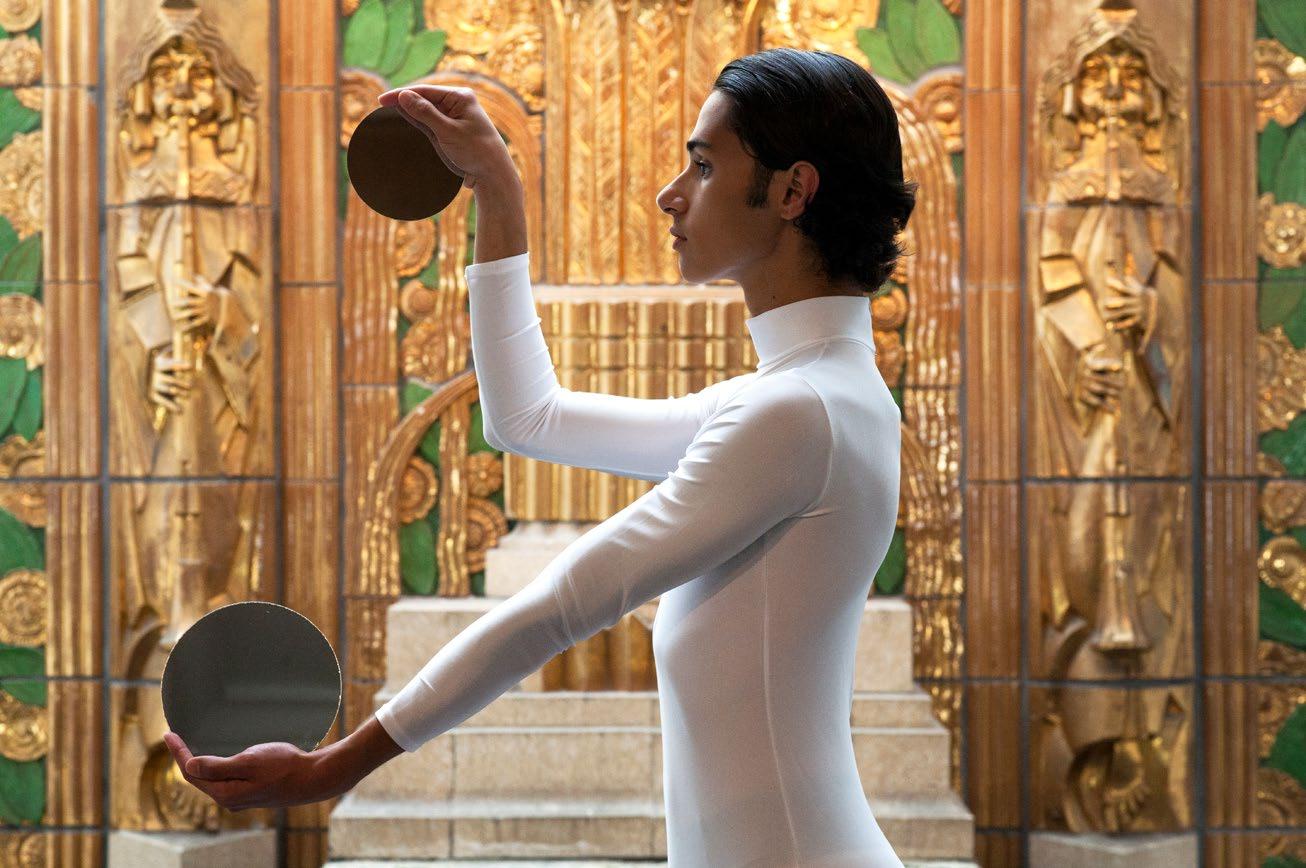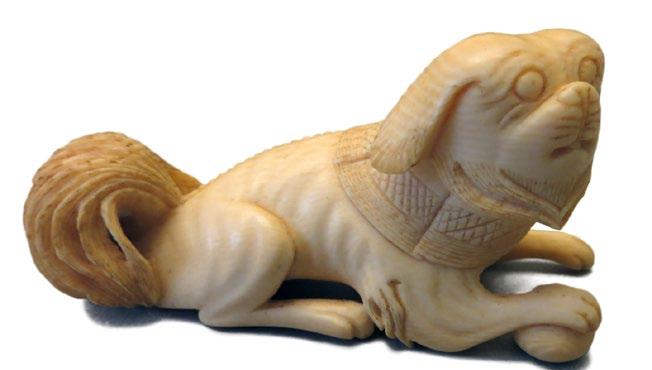
4 minute read
PERFORMANCE
The Ringling’s Art of Performance welcomes artists in residence in which choreographers, composers, circus artists, theater makers, and other practitioners can generate ideas, experiment with new artistic language, and invest in the performance of tomorrow. With the pandemic, the exhilaration of seeing live performances was limited.
With this free time, The Ringling was able to expand its Art of Performance series to create artist residencies on campus. These residencies reinforce the essentials for artistic creation, which are surprisingly lacking for today’s practitioners: time, space, and resources to experiment and iterate while prototyping works for public presentations, exhibitions, and tours. Our 66 acres allow artists to develop and design work in this serene setting.
Throughout this past year, John Sims, Liony Garcia, and Joseph Keckler were all on campus for a week in residency to develop works.
Garcia is a dancer and choreographer based in Miami. He spent part of the fall at The Ringling to work on his piece Corporal Decorum, which will be part of the upcoming season of Art of Performance. Having a residency at The Ringling has allowed him to work with his collaborator, True Harrigan, who works with projection and acrylic sculpture.
“It has been an amazing experience to further the work; having the time and space here at The Ringling has been crucial.
Prior to this, I was exploring more of the movement language that can be created out of architectural design. That without the scenery is a thing onto itself. At The Ringling, we have set up compositions on the stage to see how that would interact with the dancer’s body or interact with the stage itself. It is the first time Harrigan has stepped out of the gallery or museum space and into a performance space. We can see what the possibilities are with her work. Seeing how the body interacts with the scenery is something that is very meaningful. It’s a continuation of working with symbolism and how it can be unveiled through the use of objects.
44,624 OBJECTS 680 NEW ACQUISITIONS
642 GIFTS 18 ITEMS PURCHASED 40 OBJECTS LOANED
172 OBJECTS BORROWED
The Ringling’s collections are an important part of our heritage and future. The objects represent what John Ringling first accumulated to build our museum yet now include a multiple of mediums, time periods, and areas of interest. Our donors have been critical in helping us to build our collection, whether it is through the donation of objects or funds to obtain certain pieces.
Established in 2018, the David J. Patten Asian Art Fund was created with one specific mission—to assist The Ringling in acquiring works in underrepresented areas of the collection, including works by indigenous and minority artists in Asia. David Patten’s intent is to support the collection with funds annually so that acquisitions are immediate. The first purchases, made in consultation with Patten, were two outstanding Asian works of art: an Indian miniature painting entitled Lonely Lady in a Garden-Sorath Ragini from Rajasthan, Malpura, dated 1756, and a Japanese color woodblock triptych depicting the Tokyo firemen exercises from 1876. Patten subsequently named The Ringling as the sole beneficiary to his estate and trust.
“The best way The Ringling can honor me for including the museum in my estate plans is to make certain that my estate is used very judiciously for the purchase of outstanding Asian works of art for the museum’s permanent collection. I am so glad that The Ringling has the Center for Asian Art since the art of Asia is all too often neglected and very often not even represented in American art museums.”
Although limited mobility does not allow Patten to make trips to the museum, Dr. Rhiannon Paget, Curator of Asian Art and Michelle Young, Associate Director of Development ensure that the museum travels to Patten.
“Through frequent communication via email and phone, videos and photos of gallery updates, virtual tours, the sharing of publications that have featured his supported acquisitions at the museum, or even photos from Dr. Paget’s travels in Asia—we aim to show Patten his monumental impact on our institution,” says Michelle Young.
By donating his annual IRA RMD (required minimum distribution) to his fund, Patten has supported the museum with the acquisition of eight works of art from Asia, and he does not intend to slow down.
“I feel confident that Dr. Paget will be finding other outstanding Asian Art treasures to be acquired for The Ringling’s Center for Asian Art. She has done such an outstanding job in spending such funds by acquiring several exceptional works of art so far. I’m always amazed and so very pleased with what she’ll recommend next as an acquisition.”
It is a special experience for someone to give a treasured possession to The Ringling to enhance the museum’s collection. It is an even greater experience when that someone is a long-time employee with an interwoven history with the museum. Heidi Taylor has been an employee at The Ringling for over 30 years. As the associate registrar, no two days are the same. She works directly with the collection everyday by coordinating loans, picking up donations, cataloguing objects in the database, assisting with installing and de-installing artwork, and much more. Taylor always has a warm smile and an eagerness to help.
In 2021, Taylor made the decision to donate an extremely special piece to the museum. She donated an exceedingly rare Japanese netsuke in the shape of a dog. It is not the netsuke that is rare but its very interesting provenance. Mable Ringling gave this netsuke to Marion Smith, a circus performer and the wife of George W. Smith, general manager of The Ringling Circus. In the late 1960s, Mrs. Smith gave the netsuke to Taylor.
Netsuke are decorative toggles worn to anchor a hanging receptacle such as a pouch or a pipe from the obi or sash. Designed to delight those who take the time to look at them closely, these miniature sculptures come in a variety of shapes, subjects, and ingenious concepts. Because they are small, it is desirable for the museum to have several in its holdings in order to build an effective display in terms of thematic, formal, and technical depth and overall visual impact.







